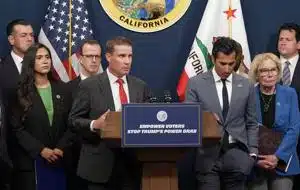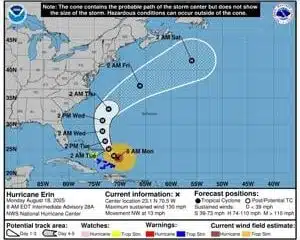(The Center Square) – In one week, U.S. attorneys for four border states charged more than 1,220 defendants with immigration crimes.
The Trump administration is prosecuting illegal entry and illegal reentry cases in accordance with federal law. The base sentence for illegal reentry is two years in federal prison. Those with felony convictions who were previously deported face up to 10 years in prison, and those convicted with aggravated felonies face up to 20 years in federal prison.
The greatest number of illegal foreign nationals charged, nearly 600, were in Texas, followed by 329 in Arizona, 169 in California and 133 in New Mexico.
In the Southern District of Texas, 216 cases were filed from April 11 through 17. The majority, 119, face illegal entry charges; 11 involve human smuggling; 86 face felony illegal reentry charges after previously being deported, with the majority having felony narcotics, firearms or sexual offense convictions.
Juries also recently handed guilty convictions and indictments in human smuggling cases, including smuggling of children and possessing child sexual abuse material.
In the Western District of Texas, federal prosecutors filed 378 immigration-related criminal cases from April 11 through 17. Those charged also include convicted felons who were previously deported multiple times. Their convictions include lewd or lascivious acts with a child under age 14, assault causing bodily injury, DWI, possession of a controlled substance, domestic assault, aggravated assault, among others.
The U.S. Attorney’s Office for the District of Arizona charged the next greatest number of 329 over the same time period. The most were charged with illegal entry, 179, followed by 130 with illegal reentry and 18 with “smuggling illegal aliens” into Arizona.
One was charged with assaulting, resisting, or impeding a Border Patrol agent. One Mexican national was arrested after refusing to register with the federal government after being arrested for driving under the influence and previously being deported five times.
Many charged were previously deported, including a Latin Kings and MS-13 transnational criminal gang member who’d been deported seven times and convicted of racketeering and conspiracy to possess with intent to distribute methamphetamine.
In another case, an alleged human smuggler was charged after authorities uncovered a scheme using the Telegram phone app and burner phones to recruit alleged smugglers in the U.S. to travel to the Arizona-Mexico border to drive illegal border crossers to Phoenix. In another case, a Mexican national was arrested after illegally reentering the U.S. after he was previously deported and convicted for trafficking heroin.
The next greatest number charged, 169, were in California. The Southern District of California filed 135 border-related cases, including for “transportation of illegal aliens, bringing in aliens for financial gain, reentering the U.S. after deportation, deported alien found in the United States, and importation of controlled substances.”
Prosecutors are prioritizing charging drug and firearms offenses, drug, firearm, and human smugglers, those with serious criminal records, those with active warrants, and those who endanger and threaten the local communities and law enforcement officers, the office said.
In a separate case, four indictments were unsealed charging 16 people in San Diego County with distributing large quantities of methamphetamine, fentanyl and heroin and laundering the drug-trafficking proceeds. In a coordinated takedown, more than 115 federal, state and local law enforcement officials executed search warrants and made arrests in three San Diego neighborhoods after a 16-month investigation.
Using court-authorized wiretaps, undercover agents and confidential sources, the investigation uncovered a distribution network of drugs, including fentanyl, throughout the U.S., including in Ohio and Kansas. The San Diego County-based drug trafficking organization used shell companies to gather and launder the proceeds from other states, including Colorado, Minnesota and Nebraska, according to the indictment.
In the Central District of California criminal charges were filed against 34 defendants for illegal reentry after they’d been previously deported. Many are felons with domestic violence, unlawful sex with a minor and assault with a deadly weapon convictions, are registered sex offenders, and served prison time.
In one case, four illegal foreign nationals were charged with stealing $10,000 in cash from a victim at a gas station in East Hollywood after following the victim from a Los Angeles bank branch. Law enforcement officers engaged in a high-speed pursuit, eventually caught them even after two bailed out and fled on foot. Officers recovered the $10,000 hidden in one defendant’s underwear as well as several fake passports.
In the District of New Mexico, 133 were charged with immigration crimes. The most, 68, were charged with illegal reentry after deportation, 55 with illegal entry and 10 with “alien smuggling.” Many charged are felons convicted of possession of a dangerous weapon by a restricted person, aggravated driving under the influence and possession of a forgery writing/device.
“Enhanced enforcement both at the border and in the interior of the district have yielded aliens engaged in unlawful activity or with serious criminal history, including human trafficking, sexual assault and violence against children,” the U.S. Attorney for New Mexico said.




















































